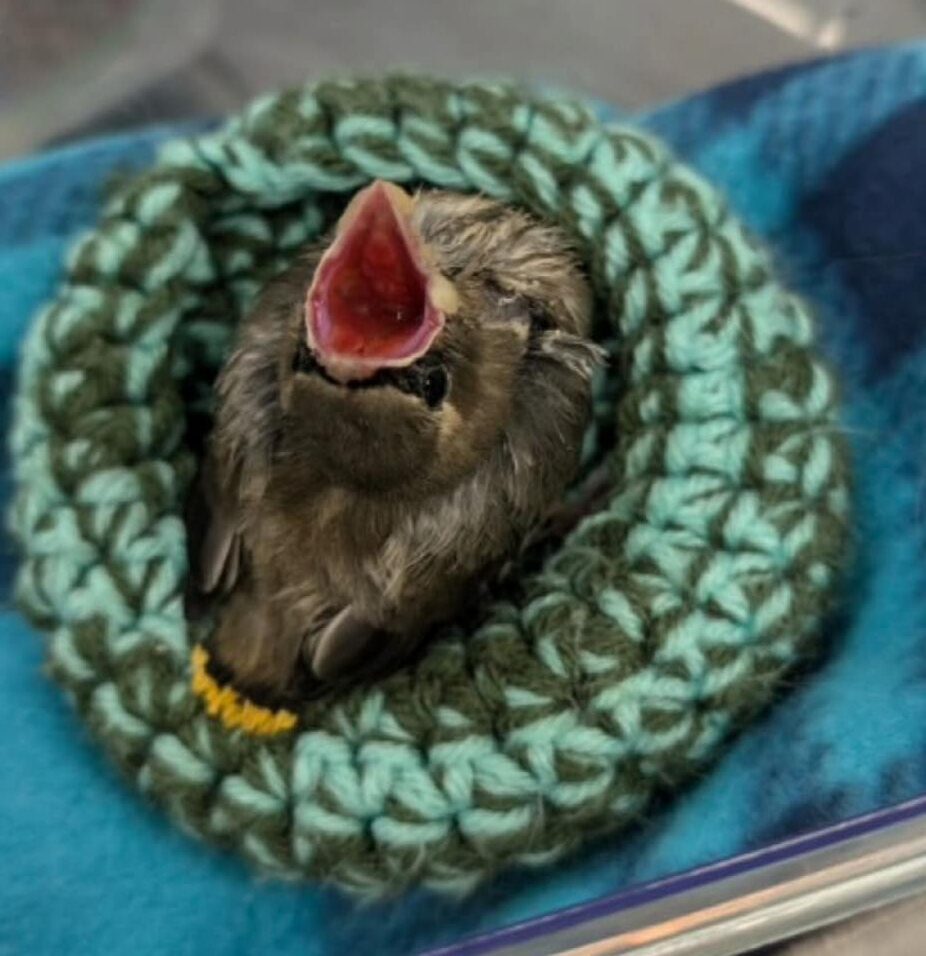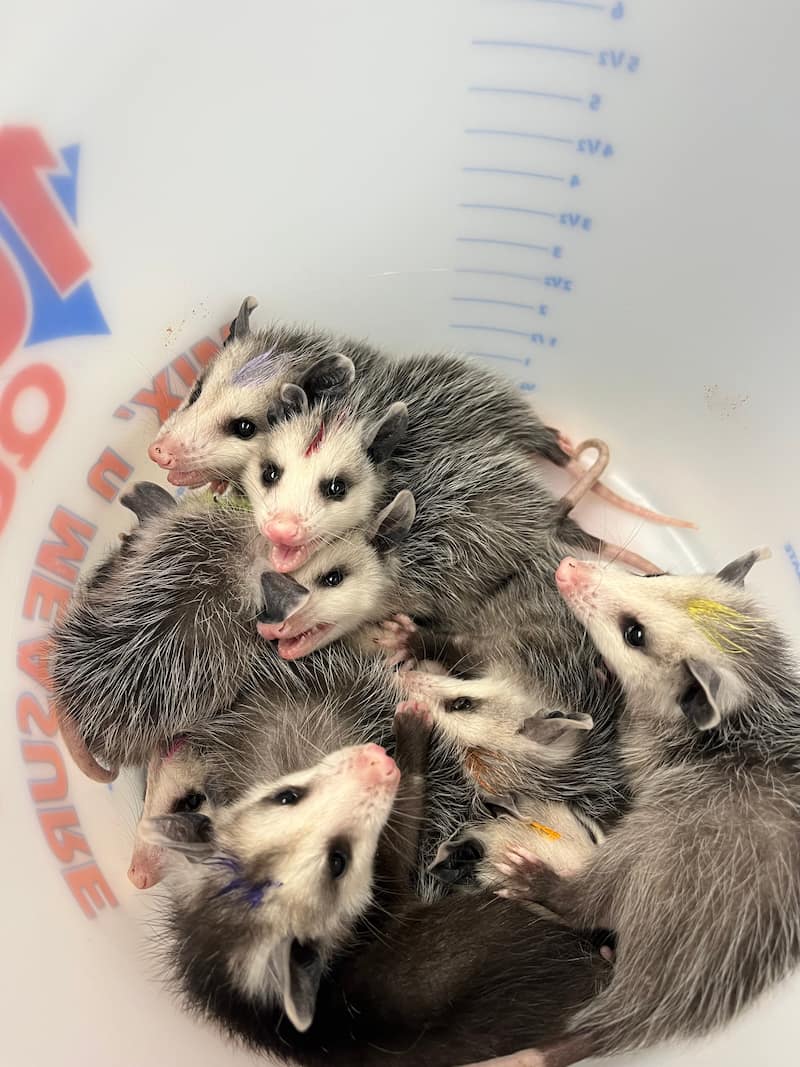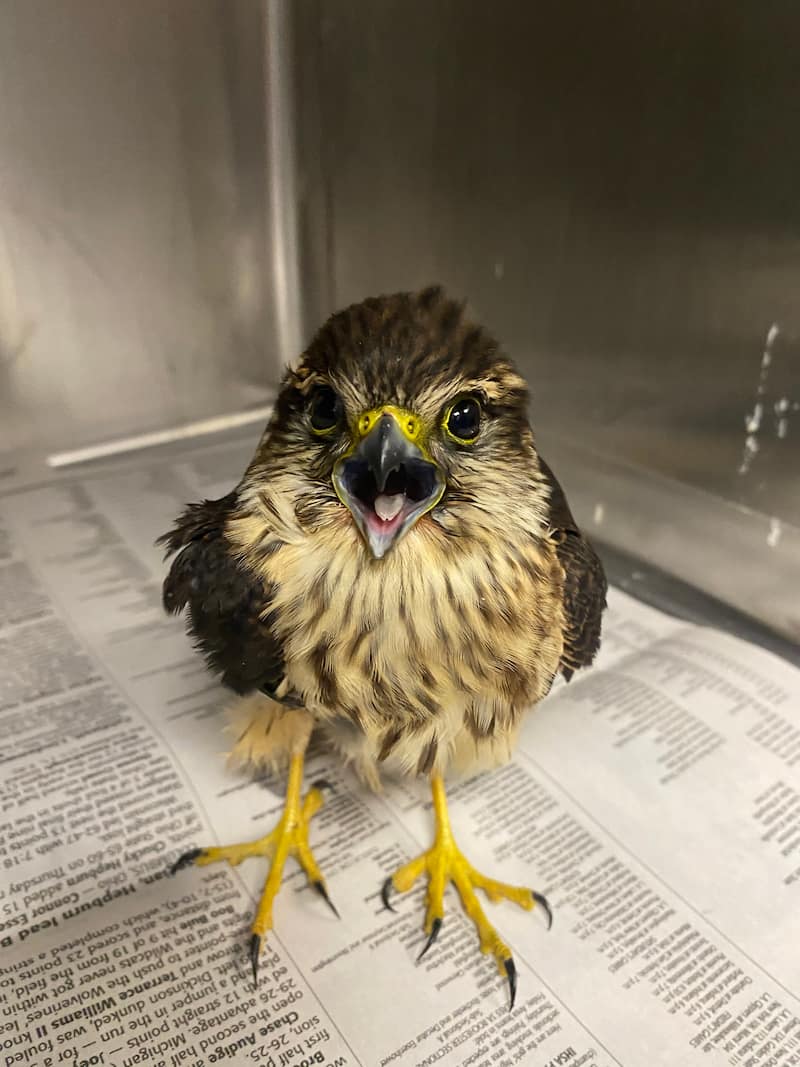by Zach Kline (WMC Manager – VM16)
Imagine a scene, if you will, where a heart-pounding tension is building. Three dusty gunslingers grimly face off; they stand equidistant from one another, forming the points of a large, dangerous triangle. Somewhere unseen, an instrumental piece by Ennio Morricone grows steadily louder. The men’s faces begin to come into view, “is that Clint Eastwood?” you ponder, examining the gruff looking cowboy with a poncho draped over his shoulder. Closer inspection reveals that this man is no man at all: he is an eagle, a Bald Eagle—cleverly disguised as a 1960’s movie icon. Similarly, the familiar visages of Eli Wallach and Lee VanCleef are notably absent, the wide brimmed hats sit instead on the heads of a pulsating fly larvae and a Canada goose, respectively.
A tumbleweed bounces hurriedly through the center of the triangle as the would-be combatants nervously eye each other and brush the grips of their pistols with their fingertips. The music builds to a climax as this Mexican standoff teeters on the edge of devolving to a Mexican shootout, when suddenly the illusion is broken and you are abruptly transported back to the place you once were—staring intently at a computer screen full of animal themed sentences.
Looking around the room, you can’t help but feel a little bit glum. Indeed, real life generally prohibits the possibility of wildlife cowboys engaged in shameless references to spaghetti westerns, but you take solace in the apparent fact that this particular blog post has a few dozen more animal-themed sentences to share—so this thrilling literary ride ain’t over yet! In fact, it’s just getting started.
So, who am I, exactly? I am second year veterinary student Zach Kline: Sergio Leone film enthusiast and student manager of the Wildlife Medical Clinic. At this moment I have just about completed my first full year since being hired as a student manager, and felt compelled to share some of my most memorable experiences from the past year. A year of being a manager has been a veritable roller-coaster ride. Of course on this roller coaster you have to replace loop-the-loops with getting covered in animal excrement, and replace all of your fellow coaster riders with hundreds of orphaned baby rabbits, but to stay true to the simile: like a roller coaster, this job has its ups, downs, and times when you feel like you might vomit. So, to keep with the Western theme, I present to you the “Good, the Bad, and the Ugly” of Wildlife Medicine.
THE GOOD:
Is there a purer, shinier good than Freedom? Ha-ha, rhetorical question—of course not! My Ultra-Red American blood wouldn’t allow my fingers to type something else, anyways 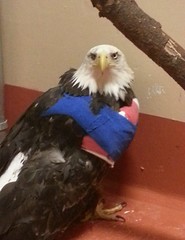 (trust me, I tried!). Now, if freedom could take a physical form, how would it appear? Obviously it would take shape as a majestic Bald Eagle. Just try to imagine a beast with a more profound aura of freedom—it simply can’t be done.
(trust me, I tried!). Now, if freedom could take a physical form, how would it appear? Obviously it would take shape as a majestic Bald Eagle. Just try to imagine a beast with a more profound aura of freedom—it simply can’t be done.
That’s why “The Good” of my first year as wildlife manager has been the excellent opportunity to treat two injured bald eagles! These magnificent birds (Haliaeetus leucocephalus) occasionally pass through Champaign County during their species’ migration, but seldom stay for longer than a week. So, while it was serendipitous to have two individuals arrive at the clinic in a short span of time from one another, it was far from 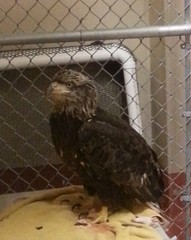 extraordinary. Both individuals suffered severe trauma to their wings. The first to arrive: a presumed male nicknamed “George”–was presented with a broken humerus from a vehicle collision, while the other, a presumed sub-adult female came to us from Peoria, IL with a fractured major metacarpal (“hand bone”). Wing injuries are perhaps the most common cause of admission for birds to the WMC, and can vary substantially with respect to the potential to successfully treat and release the animal.
extraordinary. Both individuals suffered severe trauma to their wings. The first to arrive: a presumed male nicknamed “George”–was presented with a broken humerus from a vehicle collision, while the other, a presumed sub-adult female came to us from Peoria, IL with a fractured major metacarpal (“hand bone”). Wing injuries are perhaps the most common cause of admission for birds to the WMC, and can vary substantially with respect to the potential to successfully treat and release the animal.
As a general rule: fractures that occur at the level of a wing joint, those that are old enough to the point where the tissue has begun to decay, or those where the force of trauma shatters the bone into many small fragments are considered to be prohibitive to successful re-release of the animal. Thankfully, we felt that the fractures on these two amazing birds could be successfully managed, and thus the long period of medical rehabilitation began.
Both eagles underwent surgical procedures wherein metal pins were inserted into the adjacent bone fragments and held together with an external crossbar to ensure stabilization of the break and allow appropriate healing. As one can imagine, a bird with the wingspan equivalent to that of an adult human could be considered a formidable foe. Add to the equation that the bird is injured, angry, and has an equivalently large and upset relative in the next room, then multiply that by 2-3 months of daily treatments and you would find yourself in quite a situation! A bald eagle has a large, powerful beak (even compared to other eagles) and 2-3 inch long talons on each toe that can easily pierce through the heavy protective gloves we wear to handle birds of prey. Just to make things more interesting—our eagles would flip over on their backs and grasp out with their talons when going on the defensive, ensuring that restraining the bird meant having to pass through a protective bubble of razor-sharp claws!
While the size, strength, and high stress levels of these birds could be daunting, I placed the WMC eagle experience on my “Good” list because of the way in which working with them hones one’s clinical skill. To properly restrain an eagle, one must be swift, precise and strong; yet gentle, silent, and empathetic. Too little force allows the bird to escape and injure itself or others, yet too much force/noise causes tremendous stress to the animal—delaying healing times. Essentially, those birds were my feathery, patriotic Senseis, my Avian Mr. Miyagis, if you will. With the valuable knowledge gained from working with those powerful creatures, one may then disseminate the teachings of the eagles to other WMC members, ensuring a better quality of life for all future birds of prey in captivity.
THE BAD:
In veterinary medicine, as in human medicine, there is an ever present risk of additional complications arising during a patient’s treatment. Secondary pathologies may arise due 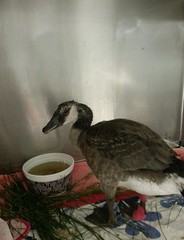 to a weakened immune system from a disease, from self-mutilation due to stress in captivity, or from the inability to move around the enclosure while recovering. A notable example found in Veterinary and human fields are pressure sores. Known more commonly as “bed sores” in human medicine, pressure sores arise from constant applied force on a localized area of tissue. Reduced blood flow to the area combined with cellular damage begets inflammation, and if the pressure is rarely alleviated from the area then inflammation never subsides and the tissue begins to die.
to a weakened immune system from a disease, from self-mutilation due to stress in captivity, or from the inability to move around the enclosure while recovering. A notable example found in Veterinary and human fields are pressure sores. Known more commonly as “bed sores” in human medicine, pressure sores arise from constant applied force on a localized area of tissue. Reduced blood flow to the area combined with cellular damage begets inflammation, and if the pressure is rarely alleviated from the area then inflammation never subsides and the tissue begins to die.
Pressure sores present a daunting challenge in injured waterfowl since a significant number of admissions are due to debilitating trauma to the legs. Heavy birds such as Canada geese initially spend a large amount of time resting on their torsos while recovering from a leg injury. Further complicating the issue is the prominent keel bone of waterfowl. This blade shaped bone sits at the center of the bird’s chest and abdomen and provides an anchoring point for the major flight muscles. However, the thin edge of the keel also serves as a point of acute pressure when the bird spends a long time lying down, and potentiates the formation of sores. Although adding padding, anti-inflammatory drugs, and hydro-therapy will help to stave off the occurrence of sores temporarily, patients requiring long periods of treatment require extreme monitoring and advanced wound care to counteract sore formation. Even then, there is no guarantee that pressure sores can be avoided. Sadly, that was the case with two Canada geese that were long term patients over the past year. The worst part is that secondary problems seem to rear their heads just when you were starting to feel hopeful about the improvements with the primary problem. Not cool, man. Not cool.
THE UGLY:
Let me start off this segment by letting you all know that I love bugs. I find the incredible diversity found in arthropods fascinating. Heck, I spent one of my first social experiences of Vet School excitedly describing a recent encounter with a brown recluse spider, so believe me when I say that I hold invertebrates in rather high regard compared to your average Joe. With that being said, I still experience a negative visceral reaction when examining a wild animal with a festering wound full of fly larvae.
Yes, maggots and other pestilent arthropods are, in my opinion, the ugliest aspect of Wildlife medicine. As we approach the warm weather season, so shall the flies begin to emerge from their wintery slumber and proceed to lay eggs on any and every suitable piece of flesh they can find. Occasionally, a lacerated wild animal evades death long enough to be captured by a kindly human and admitted to the WMC. While revolting in appearance, maggots can play a useful diagnostic role when assessing wound severity.
The quantity and size of the larvae crawling around within a wound space can give clinic members clues as to how long ago the injury occurred which plays a role in deciding how to move forward with treatment. Additionally, some species of fly larvae only feed on dead flesh, in essence debriding the wound from decomposing tissue that can become a center for bacterial infection. In fact, some maggots have evolved to secrete antibiotic compounds which eliminate bacterial competition for the glorious smorgasbord of skin and muscle.
These particular traits have been used to great effect in human wound care, as the maggots clear necrotic tissue and prevent harmful bacteria from growing! However, fly 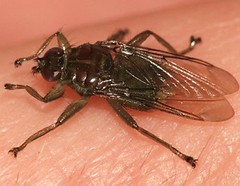 larvae that feed on live flesh are just as abundant in the wild, so we take care to remove all external parasites when an animal enters our care.
larvae that feed on live flesh are just as abundant in the wild, so we take care to remove all external parasites when an animal enters our care.
Don’t worry; the bug fun doesn’t stop at baby insects either! We now come to the adult Pigeon Louse Fly (pictured right). These housefly sized insects are flattened and have long, crablike legs that help their movement around feathers of the birds they feed on. Their discoid bodies and tough exoskeletons make these bugs hard to kill: not only for birds grooming their feathers, but for the handlers of those birds as well. What’s worse, the little bloodsuckers have a tendency to leap out of plumage during avian physical exams and always seem to aim for the face. I’ve seen groups of clinic members thrown into disarray at the emergence of a pigeon louse fly from a wild bird—usually followed by a haphazard fly-hunting mission by one of the students as the others continue with the exam.
Naturally, there is an abundance of invertebrate parasites which call the bodies of our patients “home”. Fleas, ticks, lice, mites and notably Cuterebra (pictured below): a fly larva that uses the 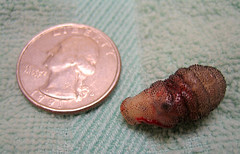 skin of small mammals as a cozy little sleeping bag as it pupates. Oh, did I mention that they can reach the size of a quarter? Yeah, so that’s a thing. Fortunately for us and the animals, external parasites are relatively easy to manage, so this ugly aspect of wildlife treatment doesn’t stay that way for too long.
skin of small mammals as a cozy little sleeping bag as it pupates. Oh, did I mention that they can reach the size of a quarter? Yeah, so that’s a thing. Fortunately for us and the animals, external parasites are relatively easy to manage, so this ugly aspect of wildlife treatment doesn’t stay that way for too long.

